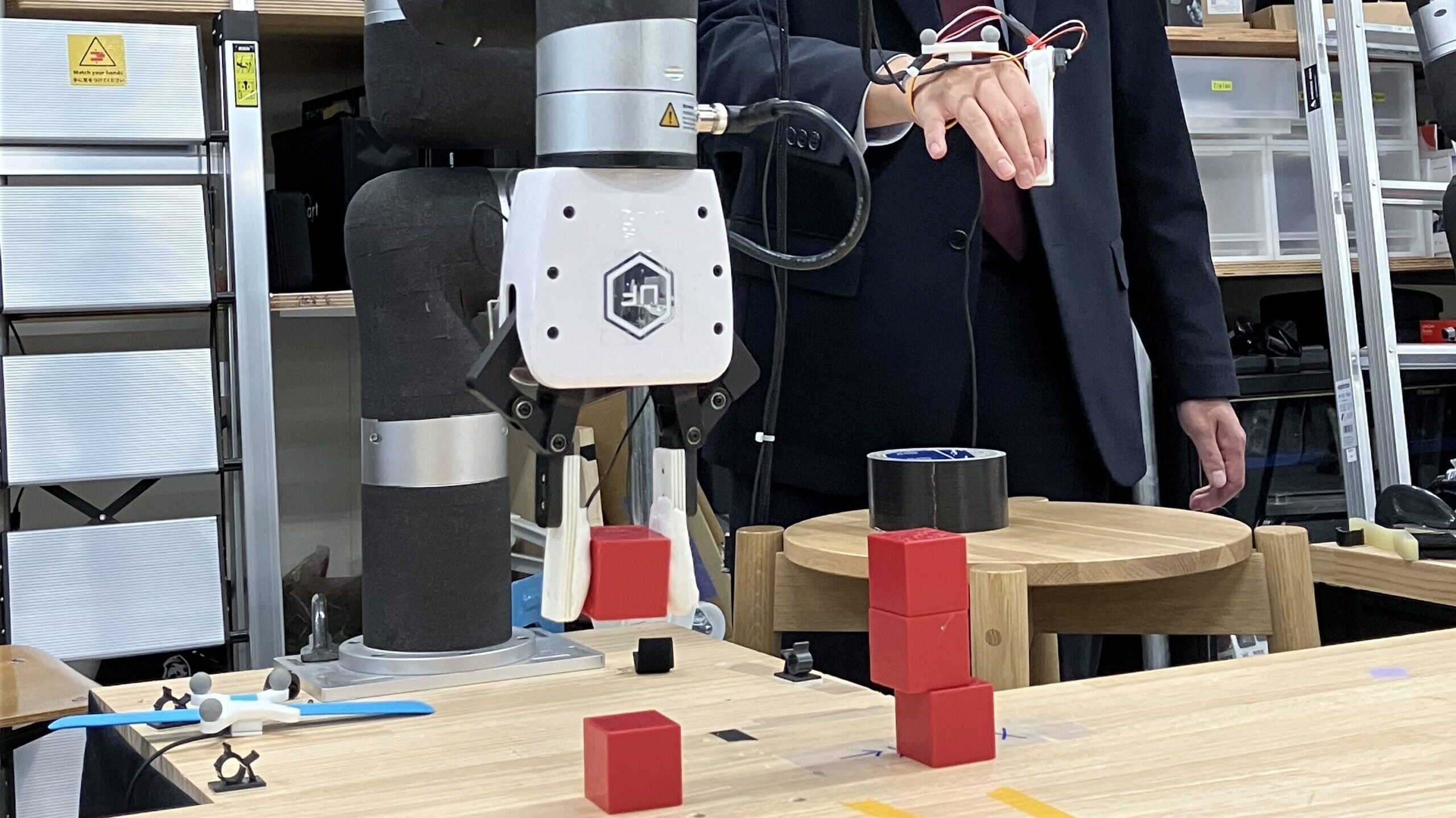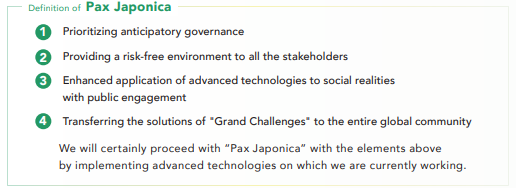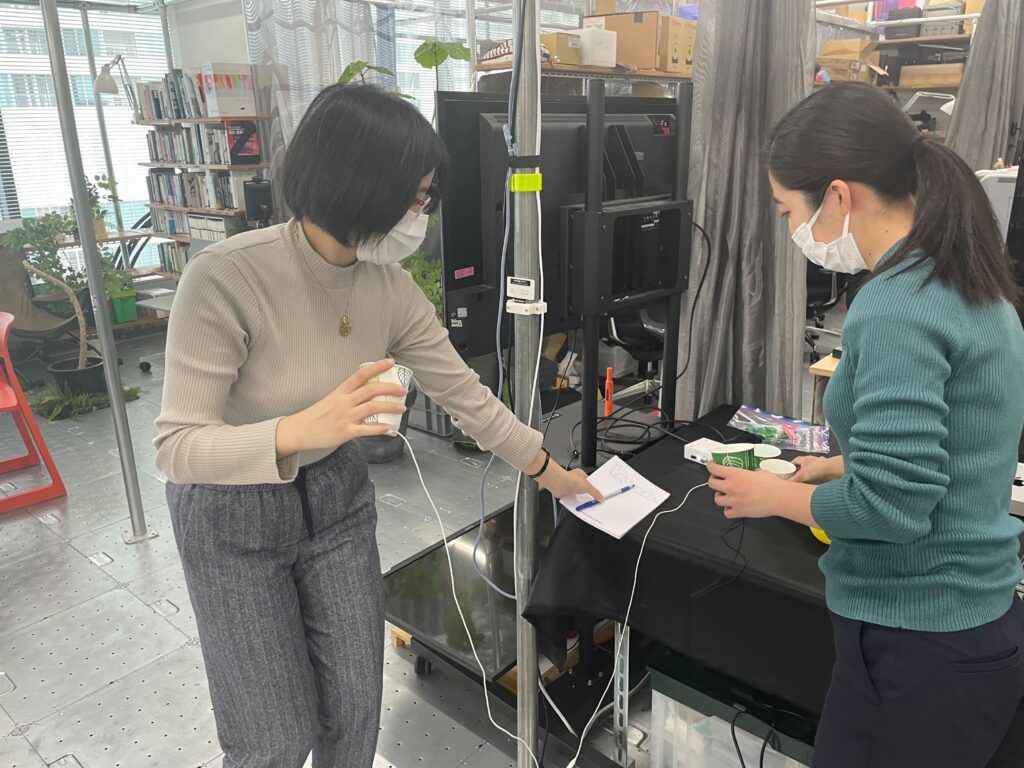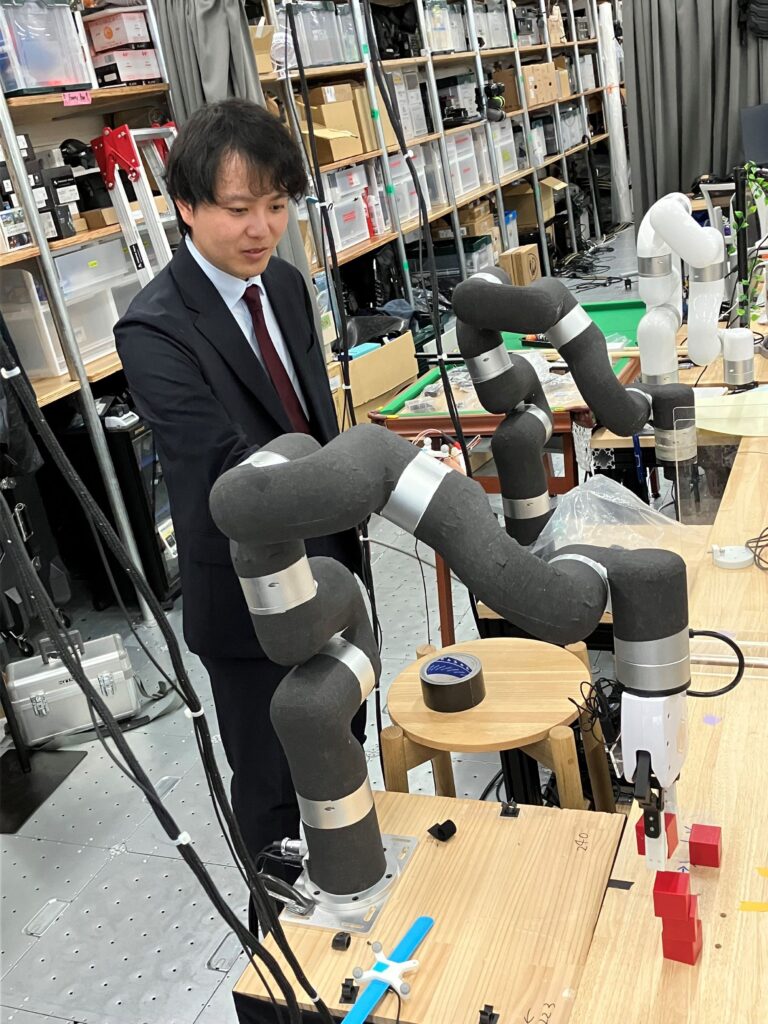Beyond Designs—the Visit to KMD Lab

This post is about our visit to one of the Keio University laboratories. Later, this connection will be an element to achieve our “Pax Japonica” through the application of advanced technologies to social realities, as shown below. This list was updated after 2022, being ready for Gnosis, the enlightenment through knowledge.

Based on this principle, our collaborative research with Tokyo University (specifically, Shunji Mitsuyoshi’s Research Project of Mathematical Engineering of Morality Emotions) has continued, but now, we are planning to establish another connection with Keio University. Once we become confident to announce, we will share details about this connection with you. For now, let me talk about our first visit to their lab.
What Is Going on in the Lab of Hamamatsucho
The lab we visited was located in a building in Hamamatsucho. I was guided by Dr. Kawaguchi, who belongs to the Graduate School of Media Design (KMD) Department and also works as a researcher at our institute. As its name, “Media Design” implies, this place was filled with books, materials, engineering tools, machines, etc., all arranged by multiple research teams within the lab. One of the unique features of KMD is that an experiment/production process (ex. the lab we visited this time) and a demonstration/implementation process (through the use of public places, such as museums and cafes) take place outside the campus. It is a seamless, ongoing research project that can be installed to public places that we use. In the lab, there were not only students, but also researchers from companies, which showed diversity of researchers and of interests in this field.
What Is Media Design?
It is just a brief introduction, but a media design often focuses on (creating) media that conveys information or emotions to someone, including how to improve these methods of conveying and communicating.
For example, Dr. Kawaguchi showed us a machine that conveyed tactile information from one paper cup to another through electric conductors attached to the bottoms of two cups. When we talk about tactile senses, they refer to characteristics such as temperature, texture (both physical and visual), and weight. Here with paper cups, what stimuli one cup received (the vibration and bounce of a rubber ball put in the cup) were transmitted to another. Another cup was empty in my hand, but it received what the cup with a ball “experienced” remotely. Senses travelled.

I guess that many people are more aware of stimuli such as vision and hearing (more direct senses), but by focusing on tactile information and touch (more subjective senses), we understand how delicate and “touching” these sensations are to our bodies. These findings will make entertainment more unique and personalized experiences if applied to enhance the viewing/playing experiences of movies and games. In fact, Dr. Kawaguchi showed us a video clip while this paper cup demonstration: this video had the sound of pouring hot water along with the peaceful movements of a tea ceremony, and scenes of a baby touching an adult’s arm with small fingers while being held in a warm sunny spot. Full of sensations. Then, Dr. Kawaguchi suggested shaking and rolling my cup in sync with these actions and sounds of this video. If multiple senses are intertwined into the same experience (in different ways from how we usually experience), I would feel more natural in getting tactile sensation blended with visual and auditory information.
Next, a robot arm waited for us. Have you ever seen a medical robot arm (ex. used for surgery)? Unlike those arms in factories that are operated and attached with other machines or robot arms, this is an independent arm. It can smoothly lift and lower objects, and move them vertically and horizontally, according to operators’ movements of arms and hands (fingers). What is noteworthy about this arm is that multiple operators can use it.

A researcher of this demonstration explained us how to operate it and we worked on a simple task together. We would just pick up red blocks in front of the arm and re-stack it one by one. I needed to synchronize with the researcher and adjust the timing to grab a small block and move it to where we wanted. We checked each other so that we could move together, steadily and carefully. Even small vibrations like a laughter could transmit to the robot arm and make it wiggle. Finally, another pile of blocks was successfully made.
Now, he told me to operate it alone. I was feeling good by the result of the first round, so I was sure I could do the same. Long story short, I ended up knocking over the blocks after just a few attempts. This happened to my colleague as well. I am positive that the researcher already knew how it would end, and he told us that such tasks were likely to succeed when two people worked together. The operation often got unstable with one person who controlled the arm 100%. With two people, the operation control was divided into two, so two operators controlled the arm at 50% in a ratio. Based on these findings, the researcher explained the potential use of robot arms and assistance that could teach professional skills of artisans and athletes to beginners.
What Is Beyond Design
By visiting the media design lab, we saw how engineering and designing became useful for communication and welfare or in public spaces. This lab is trying to respond to questions from designers’ perspectives, such as “Is our society a comfortable place for us, including minorities?” “How is communication used to prevent serious loneliness and isolation?” “How can we keep traditional cultures and skills alive?” We, IISIA are getting ready to determine how we can work with these leading designers of KMD.


